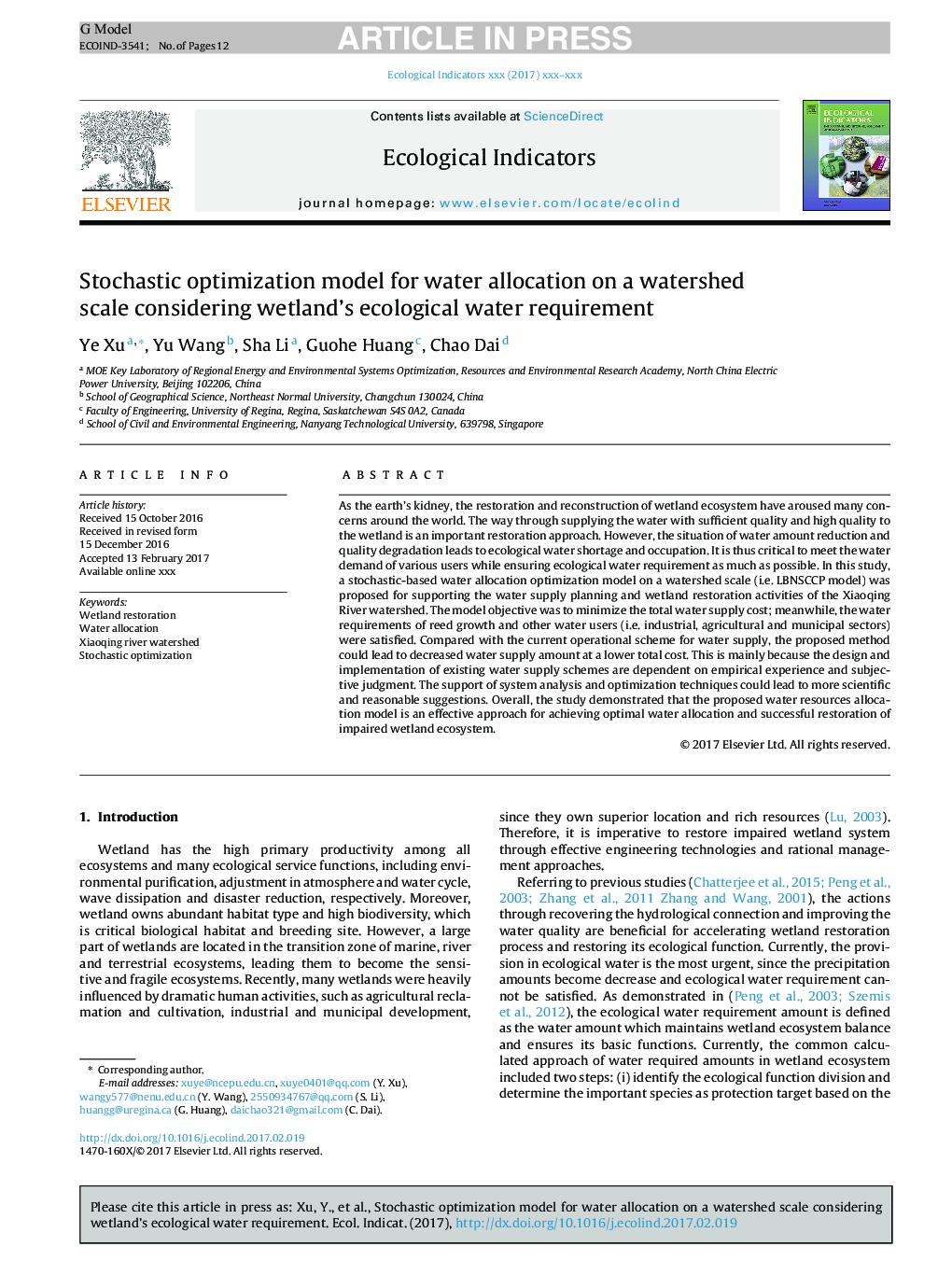| Article ID | Journal | Published Year | Pages | File Type |
|---|---|---|---|---|
| 8845271 | Ecological Indicators | 2018 | 12 Pages |
Abstract
As the earth's kidney, the restoration and reconstruction of wetland ecosystem have aroused many concerns around the world. The way through supplying the water with sufficient quality and high quality to the wetland is an important restoration approach. However, the situation of water amount reduction and quality degradation leads to ecological water shortage and occupation. It is thus critical to meet the water demand of various users while ensuring ecological water requirement as much as possible. In this study, a stochastic-based water allocation optimization model on a watershed scale (i.e. LBNSCCP model) was proposed for supporting the water supply planning and wetland restoration activities of the Xiaoqing River watershed. The model objective was to minimize the total water supply cost; meanwhile, the water requirements of reed growth and other water users (i.e. industrial, agricultural and municipal sectors) were satisfied. Compared with the current operational scheme for water supply, the proposed method could lead to decreased water supply amount at a lower total cost. This is mainly because the design and implementation of existing water supply schemes are dependent on empirical experience and subjective judgment. The support of system analysis and optimization techniques could lead to more scientific and reasonable suggestions. Overall, the study demonstrated that the proposed water resources allocation model is an effective approach for achieving optimal water allocation and successful restoration of impaired wetland ecosystem.
Related Topics
Life Sciences
Agricultural and Biological Sciences
Ecology, Evolution, Behavior and Systematics
Authors
Ye Xu, Yu Wang, Sha Li, Guohe Huang, Chao Dai,
